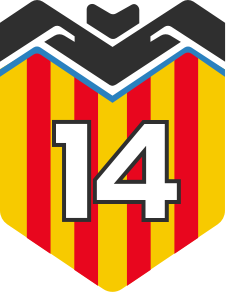Manuscript Template
Authors should prepare a PDF file following the IEEE single-space, two-column format using at least 10 point size type. The paper must be correctly formatted to fit on A4. The paper should not exceed 6 pages including figures, tables & references. Maximum 4 additional pages are allowed. Additional pages will be overcharged. The papers cannot exceed 10 pages, otherwise they will be automatically rejected. The cost of overcharge per page is indicated in the Registration Fees. The paper must be submitted in PDF format via the EDAS System.
Note: The congress organizers reserves the right to not include a paper to the Proceedings if the congress registration fee is not paid or if the paper is not presented on the ICUMT 2022 congress.
Presentation Guidelines
The duration of the presentation slot is 15 minutes/paper. We recommend to the speakers to reserve 12 minutes for the presentation itself and 3 minutes for questions from the audience. The language of the conference is English. Neither translation nor interpretation will be provided.
Equipment
For the oral presentations, the congress rooms will be equipped with data projector and laptop. For computer presentations we provide MS PowerPoint and PDF Acrobat Reader. Since using authors’ own computers often causes technical problems and breaks please do not plan to use your own laptop. Instead, please prepare your presentation in electronic form (MS Power Point, Adobe PDF) and arrive to the assigned session room 10 minutes before the start of your session to report to the Chairman and to copy your files to the presentation computer.
Final manuscript submission
ICUMT 2022 and associated workshops have been registered for use of IEEE PDF eXpress. All ICUMT 2022 congress articles submitted for inclusion in the ICUMT 2022 Proceedings must adhere to the IEEE Xplore PDF specification for compatibility. IEEE PDF eXpress is a free service to IEEE conferences, allowing their authors to make IEEE Xplore-compatible PDFs (Conversion function) or to check PDFs that authors have made themselves for IEEE Xplore compatibility (PDF Check function). If a final manuscript is not compliant with PDF eXpress, it will not be included into the proceedings submitted to IEEE Xplore after the congress.
Please be aware that for the ICUMT 2022 and associated workshops at least one Regular/IEEE/Student/Online registration before September 09, 2022 (to receive the Early Registration fee) per accepted paper is mandatory to include the paper in the proceedings of the congress and IEEE Xplore. If your paper is accepted for a workshop, at least workshop registration fee has to be paid. Full congress registration covers workshop papers as well. A paper without registered authors after September 9, 2022 (Early Registration) will be withdrawn.
Steps for the final manuscript submission:
1. Verify that your paper is created using the congress templates – see above in Manuscript template. The PDF file should be prepared according to the IEEE PDF specification. The page numbers will be inserted by the congress proceedings producer. So please make sure not to number your pages. Do not insert any footers or headers. Do not use any PDF security features in submitted PDF files, i.e., they must be fully accessible and editable by the proceedings producer for numbering and other production purposes.

